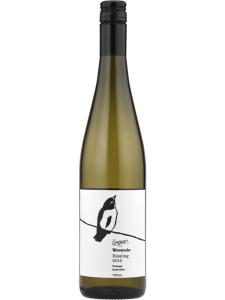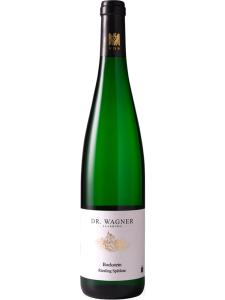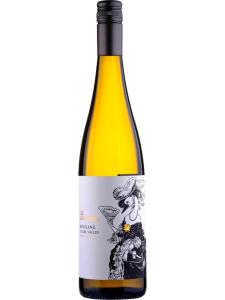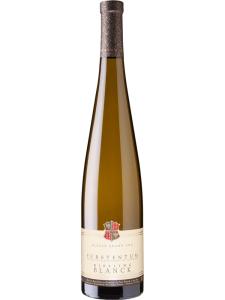-
中文名:
-
英文名:Riesling
-
种植区域:
-
香气:
-
颜色:
Riesling is a light-skinned, aromatic grape of German origin which is – if the majority of top wine critics are to be believed – the world's finest white wine grape variety.
For many, the claim above may seem at odds with the sea of chaptalized, low-quality wine exported from Germany in the late 20th Century. In truth, very little of that infamous wine was Riesling at all, but instead higher-yielding grapes such as Müller-Thurgau and Silvaner), but the reputation has nonetheless stuck. Riesling has also been stereotyped as just a sweet grape, used only to make sticky wines. But while botrytized Rieslings are among the finest sweet wines in the world, the majority of global Riesling wines are either dry or off-dry.
The Riesling vine holds a very different place in the wine world to such great grapes as Cabernet Sauvignon, Merlot or Chardonnay. While these immensely popular varieties have conquered every corner of the winegrowing world, Riesling is conspicuously absent from the core wine regions of France, Spain and Italy. Its fanbase is smaller, but fervent.
Riesling's spiritual home is unquestionably the regions that trace the middle Rhine and the lower Mosel, two of Europe's great wine rivers. Here we find the key wine regions of Germany, most famously Mosel, Rheinhessen, Rheingau and Pfalz. Riesling vines cover the steep, slate-rich hillsides above these famous rivers, and are used to make crisp, refreshing wines with pronounced acidity.
On the other side of the Rhine lies Alsace, once German but now part of France. Here, Riesling is the most important wine grape variety in terms of both quantity and (arguably) quality. Alsace Riesling has its own individual style, richer and more generous than those made in Germany. This is made possible by the region's sunny, dry mesoclimate and the shelter provided by the Vosges Mountains.
Austria also produces a large quantity of Riesling, most notably from its eastern Wachau and Kremstal regions. This is made mostly in drier styles, although Lake Neusiedl, just southeast of Vienna, creates a sufficiently humid climate for the production of sweet botrytized Riesling.
Happily, Riesling has found several New World niches to which it is very well suited. The high quality Rieslings now made in Australia's Clare and Eden valleys have proved this with particular competence. Most notably, Clare Valley Riesling has emerged as a style in its own right, with crisp, citrus-scented acidity and aromas of toast and honeysuckle. Just across the Tasman Sea, New Zealand is also making high-quality Riesling in Canterbury and Otago, while South Africa's Riesling is also showing promise. The famous ice wines of Canada are made mostly from Riesling or Vidal, and have further demonstrated the cold-resistant characteristics of this hard-wooded variety.
There are various clones and sub-varieties of Riesling in existence, and the variety has multiple variations on its name (e.g. Johannisberg Riesling, Rhine Riesling). To complicate matters, there are several white grape varieties that bear the name Riesling, but are entirely unrelated. The most notable of these are Welschriesling (Riesling Italico), Okanagan Riesling and Cape Riesling, which itself is also known as Crouchen, Paarl Riesling and Clare Riesling.
A rare, pink-skinned variant of Riesling – Roter Riesling – is grown in Germany and Austria. There is ongoing debate as to whether Roter Riesling is a mutated form of traditional Riesling, or vice-versa.
Synonyms include: Weisser Riesling, Johannisberg Riesling, Johannisberger, Rhine Riesling, Riesling Renano.
Food matches for Riesling include:
- Quiche Lorraine; zwiebelkuchen onion cakes (dry)
- Thai green curry (off-dry)
- Key lime pie (sweet)
Enjoy this video of Ernie Loosen talking about Riesling in the Mosel...
热门推荐
-

罗根维玛拉雷司令半干白葡萄酒
Logan Weemala Riesling, Central Ranges, Australia
经销商*1
-

薇歌娜庄园瑞石特级园雷司令晚收甜白葡萄酒
Weingut Dr. Wagner Ockfener Bockstein Riesling Spatlese, Mosel, Germany
经销商*1
-

花魁雷司令干白葡萄酒
One Chain Vineyards 'The Courtesan' Riesling, Clare Valley, Australia
经销商*1
-

布兰克薏思琳白葡萄酒
Domaine Paul Blanck Riesling Furstentum, Alsace Grand Cru, France
经销商*1

